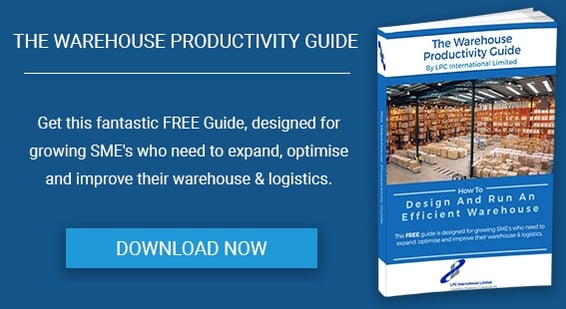
In 1666, the Derbyshire village of Eyam suffered an outbreak of plague that claimed the lives of 260 inhabitants, allegedly after a contaminated package of cloth arrived from disease-riddled London. This primitive supply chain may not reflect the dangers posed by Covid-19 – unlike the fleas that were responsible for the Eyam tragedy, transmission of Coronavirus through the shipping of goods is unlikely – but nevertheless, it demonstrates that modern supply chains need to take preventive actions to minimise the risk of the current-day pandemic. How do you do this while returning to normal and profitable working patterns?
Digitise Your Records
Some Supply chains are notorious for relying on paper-driven or manual processes, with many businesses failing to transfer to digitised records because they perceive the time or cost to be out of kilter with the benefits. While the peak of the pandemic may have passed, outbreaks of Covid-19 in food production facilities in the UK and Germany have demonstrated that a wave of local infections is a real threat to business operations.
Paper-based supply chains suffer from reduced visibility, while any interruption to trade is challenging to manage, leading to stock-outs, shortages of assets, and inconsistent schedules. Digitisation eliminates the need for physical handling of documents, provides greater visibility of stock levels and locations, and facilitates effective coordination between remote partners if parts of the supply chain are temporarily shut down.
Improve End-To-End Visibility
Stock visibility throughout the supply chain is crucial to achieve maximum efficiency and to keep customers informed about the availability of products. When the supply chain is put under pressure, such as by increased consumer demand for goods, end-to-end visibility can prevent shortages and prompt manufacturers to increase output.
As well as record digitisation, supply chain management, and warehouse management systems that offer sophisticated, in-depth analysis can provide real-time access to the entire network. This lets partners take proactive steps to replenish and transfer stock, as well as preventing overspend if demand falls.
Understand Your Supply Network
With the Covid-19 situation still changing in different parts of the UK and Europe, and new outbreaks possible in isolated areas, understanding how your supply chain network extends across geographical borders is fundamental to mitigate future problems. This means developing an acute awareness of where supply partners are based and from where goods, products or raw materials are shipped so that informed decisions can be made when forecasting supply and demand.
Implement Social Distancing Measures
Supply chains involve large numbers of people, often converging on single sites from different areas, so implementing measures to protect staff and prevent a localised outbreak of Covid-19 are essential.
- Review key pinch-points in your distribution network, staggering deliveries, and collections if possible.
- Implement electronic procedures, such as pre-booking of deliveries and collections, to minimise face-to-face contact between personnel.
- Reduce the frequency of deliveries by ordering larger quantities of stock if storage space allows.
- Minimise the number of colleagues working together to load or unload vehicles. Schedule staff to work in pairs or small groups regularly, rather than mixing with lots of different colleagues.
- If safe, require drivers to remain in their vehicles or designate a safe bubble for them to rest in to prevent contact between personnel from different facilities or locations.
- Review all areas, not forgetting changing rooms, rest rooms and other non working areas
Optimising Your Supply Chain Operations
Like the infected package of cloth that led to many deaths, the Covid-19 pandemic has forced supply partners to review their interactions and operations so they can remain competitive in challenging circumstances. Optimising your supply chain and logistics procedures will prepare your business for any unforeseen situation that threatens to derail your operations. Download our free guide to optimising your transport and distribution network, or contact us to find out how LPC can support your business.
Image Source: Pixabay



